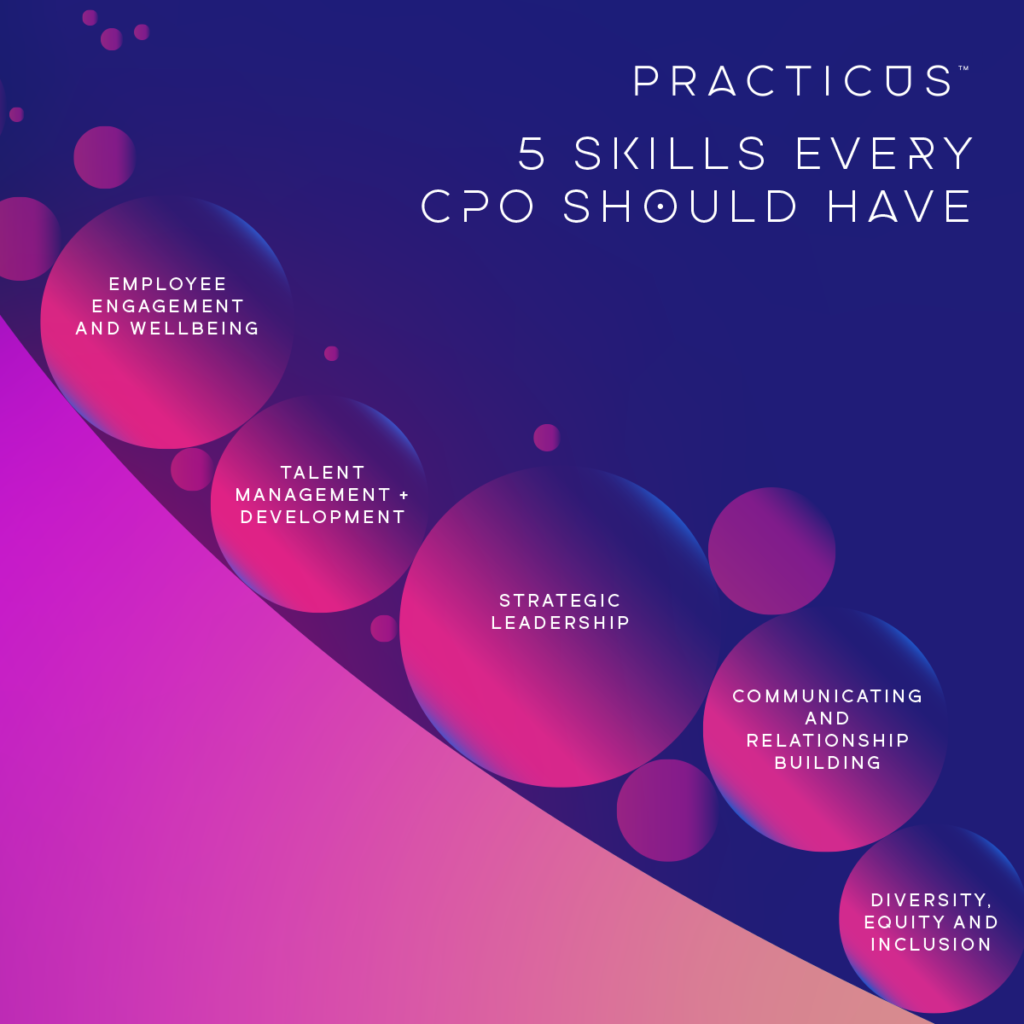A Chief People Officer, or CPO, is the top HR executive in a company. It is a senior executive responsible for overseeing the human resources function within an organisation, focusing on employee development, culture and overall well-being.
Why are CPOs crucial to business success
Chief People Officers (CPOs) are indispensable to business success for several reasons. Firstly, they are instrumental in creating a workplace culture that values and prioritises employee well-being and development. By implementing initiatives such as professional development programmes, mentorship opportunities, and employee wellness initiatives, CPOs contribute to a motivated and engaged workforce.
Secondly, CPOs play a crucial role in talent acquisition and retention. In today’s competitive market, attracting and retaining top talent is essential for business growth and innovation. CPOs develop recruitment strategies that not only attract skilled individuals but also align with the company’s values and culture. Additionally, they implement retention strategies such as competitive compensation packages, career advancement opportunities, and a supportive work environment to ensure that valuable employees stay with the company long-term.
Furthermore, CPOs are champions of diversity, equity, and inclusion (DEI) within the organisation. They recognise the importance of building diverse teams and fostering an inclusive environment where every employee feels valued and respected. By promoting diversity and inclusion initiatives, CPOs enhance employee satisfaction, foster creativity and innovation, and improve overall business performance.
Additionally, CPOs collaborate closely with other senior executives to align HR strategies with the company’s broader goals and objectives. They understand the link between employee engagement, productivity, and business success, and work to ensure that HR initiatives support the company’s strategic direction.
Overall, CPOs are crucial to business success because they focus on nurturing and empowering the company’s most valuable asset: its people. Through their strategic leadership in human resources, they drive employee engagement, attract and retain top talent, foster diversity and inclusion, and ultimately contribute to the achievement of organisational goals and long-term success.
What are the responsibilities of a Chief People Officer?
The responsibilities of a Chief People Officer (CPO) encompass various aspects of human resources management and strategic leadership. Their duties typically include overseeing recruitment and talent acquisition, developing and implementing training and development programmes, managing employee relations, ensuring compliance with employment laws and regulations, fostering a positive work culture, promoting diversity and inclusion, and aligning HR strategies with the overall goals and objectives of the organisation. CPOs also play a key role in driving initiatives to enhance employee engagement, satisfaction, and well-being, ultimately contributing to the success and sustainability of the business.
- Recruitment and Talent Acquisition
- Training and Development Programme Development and Implementation
- Employee Relations Management
- Compliance with Employment Laws and Regulations
- Cultivating a Positive Work Culture
- Promoting Diversity and Inclusion
- Alignment of HR Strategies with Organisational Goals
- Driving Initiatives for Employee Engagement, Satisfaction, and Well-being
What the ideal CPO looks like
The ideal Chief People Officer (CPO) possesses a combination of strategic vision, interpersonal skills and a deep understanding of human resources principles. They are visionary leaders who can effectively align HR strategies with the overall goals and objectives of the organisation. The ideal CPO is a strong communicator and collaborator, capable of building positive relationships with employees at all levels of the organisation. They are empathetic and approachable, with a genuine commitment to fostering a supportive and inclusive work culture. Additionally, the ideal CPO is proactive and innovative, constantly seeking ways to enhance employee engagement, satisfaction, and well-being. They are also adaptable and resilient, able to navigate complex challenges and drive positive change within the organisation. Overall, the ideal CPO is a strategic thinker, a compassionate leader, and a champion of the company’s most valuable asset: its people.
Who works closely with the CPO?
The Chief People Officer (CPO) typically works closely with other chief officers, including the CEO (Chief Executive Officer), CFO (Chief Financial Officer), COO (Chief Operating Officer), and other members of the executive team. They collaborate with these leaders to align human resources strategies with the overall goals and objectives of the organisation, ensuring that HR initiatives support the company’s strategic direction and contribute to its success. Additionally, the CPO may work closely with department heads and managers across the organisation to implement HR policies and initiatives at all levels.



